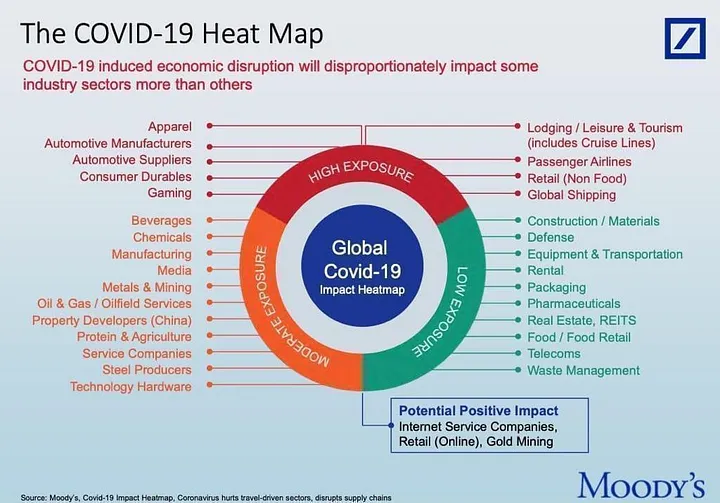
Nov 2, 2018 | 3 min read
Managing Employee Cost During COVID-19 Crisis — a perspective for the Engineering Sector
Link to Audio Recording & Slide Deck
https://drive.google.com/drive/folders/1-X5yh_7MrU-
ExxbdWI6m2AnZRAK2OlfV?usp=sharing
Panellists
Girish Trivedi, Business Transformation Specialist with 40+ years of experience in business turnaround. He is the former Managing Director of Thermax Babcock Wilcox.
Amit Choudhary, HR Head of Thermax Babcock and Wilcox Energy Solutions Pvt. Ltd. with 20+ years of experience in HR and a specialization in Compensation & Benefits
Shyne Devasia Kochuveed, Partner, PeopleWiz Consulting LLP., 20+ years of experience in HR management and consulting
Usually this time of the year most companies compute employee costs, salary increments and variable pay / incentive disbursement for their employees. This year could not be more different. These was no time for planning for the situation that we are in today and the future is unknown.
All of us are by now used to the bad news which has been trickling in slowly.
As per UN report, as against the expected GDP growth of 6%, India’s GDP growth is expected to slow down to 4.8%. The World Bank has predicted that India will see growth of just 1.5–2.8 per cent which will mean a 30 year low for India.
“11,000 industrial units struggle to meet salary bill in Pune” ET Pune 8th April 2020
Here are some of the discussion highlights
Expected Impact on the Engineering sector
In the Engineering sector, Automobile, Capital goods, and Infrastructure are worst affected. The impact on each will vary. Right now, ‘Cash is King’, and focus needs to be on managing its movement in and out, with agility in planning. Plans should include imperatives for surviving the current impact, and for managing forecasted impact over the next one year. Leaders should reflect best-case, worst-case, and most likely scenarios. Traditional revenue streams will come under pressure, making it necessary to think of new revenue streams based on present resources and infrastructure. In addition to cost pressures, attention to maintaining team morale and motivation are vital.
The figure below based on Moody’s reports shows Covid -19 risk exposure to various sectors.

Good compensation practices that can reduce employee cost and yet be fair to the employees
1. When it comes to managing employee cost, remember the motto — ‘Defer rather than deprive’. Link balance pay-outs to recovery based milestones. This means that for the next financial year you can reduce the fixed pay rather than reducing the CTC and pay the differential once the company is able to achieve its financial goals and have collected the money.
2. Involve Employees for suggestions to arrive at mechanisms to reduce employee costs. Create a representative group and ask them to identify ways of reducing cost. Don’t look at employee costs in isolation. Target all types of costs and expenses.
3. Ease out poor performers — This is the time for businesses to identify & right size their team. Retain people who have shown good potential, have up-skilled their knowledge & skills, have a positive attitude towards the Company and their work and are committed to delivering high performance. In our experience any organization will have around 5% of their population performing far below expectation. It is time to let them go. If you handle the communication well, there should not be any negative impact on the employer brand.
4. Graded salary cuts. At senior management level % of pay cuts could be higher. For this to work, employers will need to maintain transparency and gain trust of employees by coming clean. Show them the financials. This will instil confidence and commitment both ways.
5. Look at ESOPs as an option — Convert your employer: employee relationship to partnership by offering stakes to key stake holders (ESOPs).
6. Worker exchange program — Have a common understanding within the Industry and loan resources to Companies who need similar skills and share the salary cost. Startups should also look at other startups, Partners, Vendors. Large companies should look at subsidiaries for resource sharing.
7. Leave without pay, sabbatical — If you foresee that in the long term you will need competent resources, however in the short term you are unable to bear their salary cost, then you may encourage sabbatical / long term leave without pay in consultation with the employee. You may also encourage employees to upgrade skills / knowledge and choose to reimburse 50% of their certification fee whenever you re-engage them.
8. Evaluate every non-essential perk. Revisit compensation structure to introduce variable performance based pay — Companies that have extended perks such as Car, Housing, etc., can temporarily suspend the policy.
9. Introduce a variable compensation with a higher % of variable pay for the Leadership team and top rung employees.
10. Renegotiate with benefits providers e.g. hospitalization premium — Irrespective of when your contract with a service provider is due, please initiate a dialogue and renegotiate rates.
11. Focus on efficiency — Ask employees for suggestions on improving productivity, cutting expenses. This will also help in reviewing your manpower numbers and associated cost.
12. Employee reassignments. One of the most important aspect is to relook at your Organization design and operating model. This will help you identify and eliminate non-core roles and role rationalization.
-Communication with employees
A sensitive topic like this should never be restricted to one person or a department dictating decisions. Try and push for collective understanding, at least within the Heads of the Department / Function. Identify your opinion makers and always make sure that you are capturing their voice / suggestions / ideas. Undertake a 5C approach to manage delivery of critical business decisions to employees.
Communicate with compassion;
Assign Compelling goals; invite ideas for process improvement, increasing efficiency and cost reduction, by creating campaigns with slogans and visual displays.
Collaborate; employ a collaborative mechanism to look at Cost by creating small groups, leveraging the general multi-tasked resources available, inviting observers, as well as taking outside help to galvanize teams through guidance and coaching.
Commitment from leaders; lead by example, volunteer for pay cuts, change traditional ways of thinking and decision-making, befriend technology.
Celebrate & Compensate; celebrate even small achievements, appreciate ownership and performance, defer compensation based on achievement of milestone, and motivate employees through Rewards & recognition.
Balancing long term growth plans with short term survival challenges.
Considering that MSMEs contribute about 30% to India’s GDP growth, the Government will be instigated to take measures for mitigating the economic impact. One example is Japan, that announced stimulus package of 990 billion US dollars which is 20% of their GDP. Focus will shift to countries like India as potential global manufacturers, provided India gears up and creates a culture of performance like China has nurtured for decades. In terms of resources, hiring freelancers and shared resources with requisite knowledge and skills will be preferred. Compensation packages will reflect more components dependent on performance, as opposed to fixed ones.
Single most important advice
After all is said and done, the single most important thing that matters is leadership. COVID-19 is an opportunity in disguise for us to be better, and leaders must emerge from this with a changed mindset. Help employees to get into this mindset. Let them know in business nothing is given. As the world gets more global, you never know when the next “virus” will be lurking say in the form of some geo-political turmoil or currency wars or regional conflicts. Leaders must acknowledge the role team members play in sculpting organizations. Let us not take any compensation related decision in isolation. Please remember that your Company has not just been created just by you. Your employees are your key stakeholders. Co-create a strategy with them. Come clean. For some of us layoffs could be the only option left but let us make sure that it is the absolutely last option.
More Blogs

May 15, 2018 | 3 min read
6 valuable Business Lessons the sitcom “F.R.I.E.N.D.S” taught us
Like everyone else in the world, I am a huge fan of the 90’s sitcom Friends...
Read More
May 15, 2018 | 3 min read
6 entrepreneurship lessons from my 11-month old daughter!
Babies are born entrepreneurs. They step into unchartered territory with enviable confidence...
Read More
May 15, 2018 | 3 min read
6 valuable business lessons that my clients taught me
Happy 6th birthday, PeopleWiz! It’s that day again when we take a pause and look back...
Read MoreDelivering the future of workplace